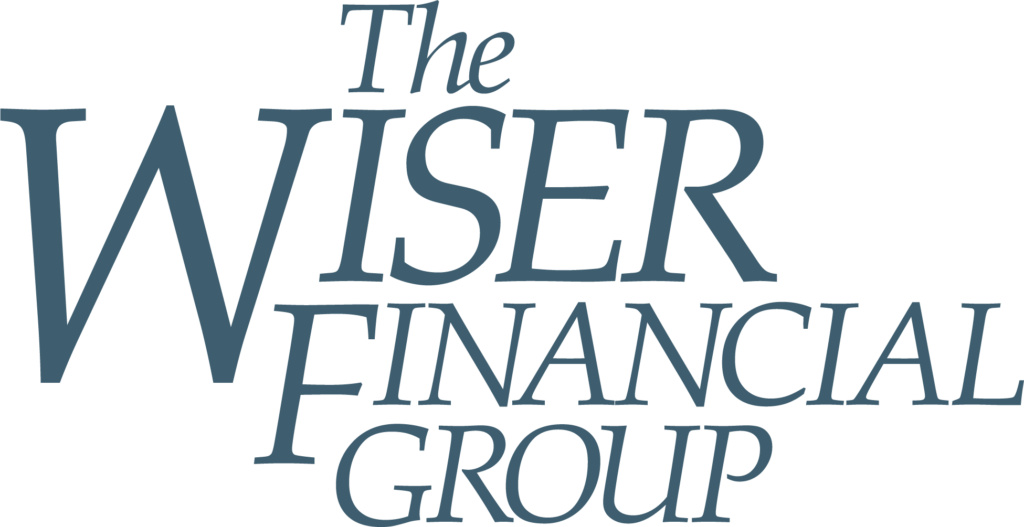When Is the Best Time to Start Saving for Retirement?
At Wiser Financial Group, one of the most common questions we hear is: When is the best time to start saving for retirement? The answer is simple: the best time to start saving is today.
Whether you’re in your 20s, 40s, or even your 50s, building a solid retirement plan starts with one key habit: putting money aside consistently. Every year you delay means fewer opportunities for your savings to grow. Starting early gives your personal savings more time to benefit from compound interest, investment growth, and tax advantages.
The earlier you begin saving for retirement, the more flexibility you’ll have later in life and the more secure your financial future will be.
Why Saving Early for Retirement Pays Off
Saving early isn’t just a smart move; it’s one of the most effective ways to build long-term retirement income. Whether you’re aiming to retire early or simply want a comfortable retirement, early action lays the foundation for future stability.
Even modest, regular contributions to your retirement account can grow significantly over time. That’s because saving for retirement early gives your money more time to compound, ride out market ups and downs, and increase through long-term investments.
This strategy also helps reduce financial stress later on. Instead of scrambling to catch up, you’ll already have a nest egg in place: one that’s been quietly working on your behalf for years.
Harnessing the Power of Compound Interest
Compound interest is one of the strongest tools you can use to grow your retirement savings. As your investments earn interest, that interest itself also begins to earn interest. Over time, this creates a snowball effect that helps your balance grow faster than with simple contributions alone.
Start saving early, and you’ll give compound interest more time to work in your favor. According to T. Rowe Price, a person who begins saving for retirement at age 25 should aim to have at least one year’s salary saved by age 35. This early momentum can significantly impact your ability to achieve long-term financial goals.
If you’re contributing to a 401(k) or individual retirement account (IRA), compound growth is already on your side. The key is to stay consistent and let time do the heavy lifting.
How Early Investing Reduces Your Market Risk
Starting early also gives you more time to recover from market volatility. When your investment horizon stretches over several decades, short-term dips in the market won’t derail your retirement plan. You’ll have time to rebalance, adjust your risk tolerance, and stay invested through the ups and downs.
By saving early, you’re not only giving your money time to grow, but you’re building a retirement savings strategy that can withstand market risk. This long-term approach enables younger investors to create a more stable financial future.
According to Experian, the average 401(k) balance for workers under 35 was over $37,000 in 2021. That figure illustrates how regular contributions, particularly in an employer-sponsored retirement account, can lead to substantial growth. It’s also a reminder that starting early makes it easier to build your nest egg steadily without needing to contribute massive amounts all at once.
The Right Age to Begin Your Retirement Plan
Everyone’s financial journey looks a little different, which means there’s no single age that’s “right” for starting a retirement plan. What matters most is getting started when you can and making consistent progress over time.
Whether you’re in your 20s, 40s, or 60s, there are practical steps you can take to grow your retirement savings, strengthen your financial plan, and move closer to your long-term goals.
Advantages of Starting Retirement Savings in Your 20s
Your 20s are the ideal time to begin saving for retirement. At this age, your most significant advantage is time, specifically, time for your investments to grow through compound interest.
Even small contributions can make a big difference over several decades. Opening a Roth IRA or contributing to a 401(k) early on can help you earn interest, build momentum, and reduce financial pressure in the future.
According to Fidelity Viewpoints, it’s a good idea to save at least 15% of your pre-tax income each year, including any employer match. That target may seem high at first, but starting small and increasing over time can help you build a strong foundation without straining your budget.
And with the average retirement savings for those aged 25 to 34 sitting at $30,017, according to Experian, consistent saving in your 20s adds up.
Practical Strategies for Starting in Your 30s and 40s
If you’re in your 30s or 40s, you likely have a steadier income and more room in your budget to start saving or catch up. Financial experts recommend saving 10 to 15 percent of your income each year, primarily through an employer-sponsored plan, such as a 401(k).
According to Experian, the average retirement savings for individuals aged 35 to 44 is $76,354. For those aged 45 to 54, it rises to $142,069. Even if you start late, these numbers demonstrate that meaningful progress is achievable with consistent and regular contributions.
This is also a smart time to map out your retirement income needs. The 70% Rule suggests you’ll need about 70 percent of your pre-retirement income to maintain your current lifestyle. If you earn $80,000 annually, that means aiming for roughly $56,000 per year from savings, Social Security benefits, and other income sources.
To strengthen your financial plan without overhauling your lifestyle, consider:
- Automating contributions to your retirement account
- Taking full advantage of employer-matching
- Increasing your contribution rate by 1–2% each year
Retirement Saving Tips for Those Over 50
If you’re over 50, it’s not too late to secure your financial future. This phase of life offers unique advantages, primarily through catch-up contributions, which allow you to save more each year.
As of 2025, the IRS lets you contribute an additional $7,500 to your 401(k) and $1,000 to your IRA annually if you’re age 50 or older. This gives you the chance to grow your retirement account balance more quickly while potentially lowering your taxable income.
According to Experian, the average retirement savings for people aged 55 to 64 is $207,874. While this is the highest average across all age groups, it may not be sufficient for a comfortable retirement, depending on your lifestyle, expected healthcare costs, and the duration of your planned work.
Now is the time to take a close look at:
- Your risk tolerance and how your investments are allocated
- Your expected monthly income and living expenses in retirement
- Whether you plan to work part-time or delay retirement to increase your Social Security benefits
Even if you feel behind, every year you contribute makes a difference. With a focused retirement plan and the help of a financial advisor, you can move closer to your retirement goals with confidence.
Selecting the Best Retirement Account for Your Goals
Choosing the correct retirement account is one of the most important decisions you’ll make when building your long-term retirement plan. The type of account you use affects how your money grows, how it’s taxed, and how easily you can access it during your retirement years.
Whether you’re just getting started or refining your strategy, understanding the options, especially 401(k) plans and individual retirement accounts (IRAs), can help you make choices that support your financial goals.
Individual Retirement Accounts (IRA): Traditional vs. Roth
An individual retirement account (IRA) is a flexible, tax-advantaged way to save for retirement. It is beneficial if you do not have access to a 401(k) or other employer-sponsored plan. There are two main types: Traditional IRAs and Roth IRAs.
A Traditional IRA lets you deduct your contributions from your taxable income now. Your investments grow tax-deferred, and you will pay taxes when you withdraw the money in retirement. This option may be suitable if you anticipate being in a lower tax bracket in the future.
A Roth IRA is funded with after-tax dollars. While you do not get a tax break now, your withdrawals in retirement are completely tax-free. This can be an excellent choice for younger investors who anticipate earning more in the years ahead.
Both options offer meaningful benefits. The right choice depends on your income, your future tax outlook, and how you plan to use your retirement savings.
Understanding the Benefits of a 401(k) Plan
If your employer offers a 401(k), it can be one of the simplest and most effective ways to start saving for retirement. Contributions are deducted directly from your paycheck, helping you maintain a consistent savings plan. Many employers also offer matching contributions, giving you additional money for your future.
A 401(k) also allows for higher annual contribution limits than IRAs. In 2025, the limit is $23,000. If you are 50 or older, you can contribute an extra $7,500 as part of catch-up contributions.
Like a Traditional IRA, a 401(k) grows tax-deferred, and you will pay taxes when you begin taking distributions in retirement. If you leave your job, you can roll the funds into another 401(k) or an IRA without penalty.
For many people, a 401(k) is the foundation of their retirement savings strategy. Taking full advantage of any employer match is a smart way to grow your savings more efficiently.
Practical Ways to Accelerate Your Retirement Savings
If you did not start saving as early as you had hoped, there is still time to strengthen your retirement plan. Small changes today can have a lasting impact on your future. By adjusting your approach and staying consistent, you can build real momentum in the years leading up to retirement.
Consistently Increasing Your Retirement Contributions
One of the most effective ways to grow your retirement savings is to increase your regular contributions over time. If you receive a raise or bonus, consider putting part of it toward your retirement account. Even small percentage increases each year can lead to significant gains over time.
If you participate in a 401(k), check whether your plan includes automatic escalation. For IRAs or personal accounts, you can set up recurring transfers from your bank account. Automating your savings helps you stay on track without the need to make monthly decisions.
The more consistent you are with your contributions, the more stable your financial future becomes.
Catch-Up Contributions: Extra Savings for Those Over 50
If you are 50 or older, you have an opportunity to accelerate your savings through catch-up contributions. These allow you to contribute beyond the standard annual limits and are especially valuable during your peak earning years.
In 2025, the IRS allows an additional $7,500 in contributions to a 401(k) and $1,000 to an IRA. This means you can contribute more toward your retirement income goals while also reducing your taxable income.
Using catch-up contributions is a smart way to close any remaining savings gap and move closer to the comfortable retirement you’ve worked toward.
Take Control of Your Financial Future Today
Whether you’re just beginning to save or making up for lost time, having a clear strategy makes a significant difference. A thoughtful retirement plan helps you stay focused, set realistic targets, and avoid surprises down the road.
At Wiser Financial Group, we take the time to learn what matters most to you. From selecting the proper retirement accounts to planning for healthcare costs, taxes, and income needs, we help you make informed decisions tailored to your goals.
If you’re ready to move forward, our team is here to help. Explore our Retirement Planning services and take the next step in building a more secure, more intentional financial future.

Are you ready to get started?
If you’re eager to begin your financial journey, the team at Wiser Financial group is here to help.
